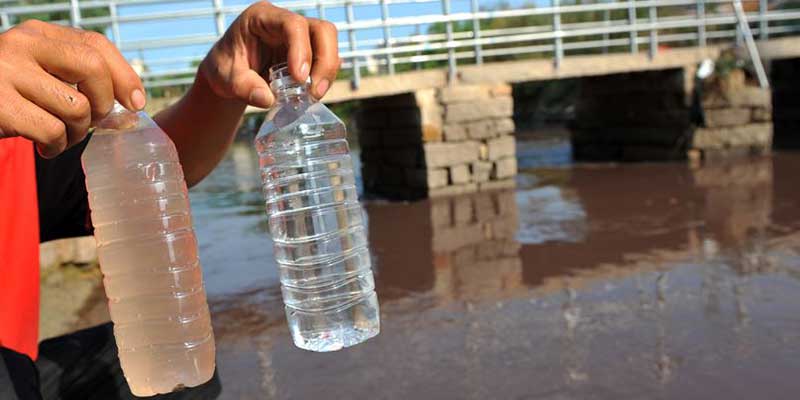Total dissolved solids can affect water’s color, odor, and taste. Most dissolved substances do not threaten health, but they may prompt consumers to stop drinking or using water despite it being safe.
A level of total dissolved solids (TDS) that’s too high or low can affect health, the environment, and more
The measure of “total dissolved solids” (TDS) is an important overall water quality metric that refers to all filterable organic and inorganic substances found in water.
The Boulder Area Sustainability Information Network explained:
[Total dissolved solids] is a measure of the amount of material dissolved in water. This material can include carbonate, bicarbonate, chloride, sulfate, phosphate, nitrate, calcium, magnesium, sodium, organic ions, and other ions. A certain level of these ions in water is necessary for aquatic life. Changes in TDS concentrations can be harmful because the density of the water determines the flow of water into and out of an organism’s cells. However, if TDS concentrations are too high or too low, the growth of […] aquatic life can be limited, and death may occur.
Determining TDS
TDS is commonly tested with a conductivity probe that detects ions, and then values are derived differently depending on the use for which the water is destined. Gravimetric tests can also measure high TDS concentrations, but they overlook volatile organic compounds (VOCs), and particular solids can also be measured in isolation.
The solids may find their way into the water through leaching and runoff from natural sources, in the case of silt and minerals, or through human activities in the case of sewage and wastewater discharges, urban and agricultural runoff, and salts used to de-ice roads.
Most drinking water, according to U.S. Environmental Protection Agency secondary standards, contains an average of between 200 and 300 mg/L of TDS. Water with TDS of more than 500 mg/L is not recommended for human consumption because high amounts of TDS in drinking water can negatively affect palatability.
The relative safety of water depends on which solids are present, so TDS is not necessarily a measure of drinking water safety; however, TDS often affects water’s taste, smell, and color. The World Health Organization (WHO) has quantified the effect of TDS levels on aesthetics as follows:
- Excellent: <300 mg/L
- Good: 300-600 mg/L
- Fair: 600-900 mg/L
- Poor: 900-1,200 mg/L
- Unacceptable > than 1,200 mg/L
- Also unacceptable: Extremely low
In the United States, TDS is considered a “secondary maximum contaminant level.” That is, most dissolved substances do not threaten health, but their color, odor, and taste may prompt consumers to stop drinking or using water even if it is safe. The EPA has a secondary drinking water standard for TDS of no more than 500 mg/L.
Excessive amounts of some of the compounds dissolved in water can also cause corrosion or other problems in water distribution systems. A prime example is scaling, which damages pipes, water heaters, and appliances.
Dissolved Solids in Commercial Settings
Conductivity is an important water quality metric in manufacturing, when water with low specific conductance is needed. Specific conductivity is a measurement of the ions present in water. For example, a high amount of salt dissolved in water affects water’s conductivity and can cause purity problems for pharmaceutical or food and beverage manufacturers.
Many water treatments are available, including flocculation, filtration, biological treatment, reverse osmosis (RO), desalination, and aeration.
High saline content can also render water unsuitable for agricultural irrigation and wreak havoc on equipment. Whether the source is seawater or brackish groundwater, Fluence’s NIROBOX™ line of Smart Packaged RO units and NIROFLEX pre-engineered building blocks filter a range of solids and desalinate brackish or seawater with updated, hyper-efficient technology.
Whether the target is beneficial environmental discharge, crop or landscape irrigation, industrial process water, or drinking water, Fluence has the technology and decades of expertise to achieve your target water quality.

